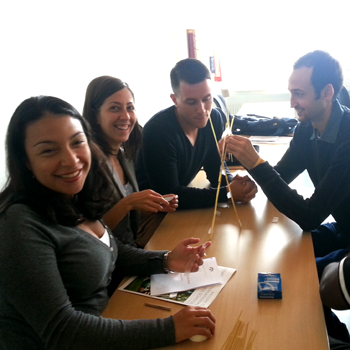Teaching Systems. Getting future IT entrepreneurs to see the full picture
DOI:
https://doi.org/10.7577/formakademisk.793Emneord (Nøkkelord):
graduate education, systems thinking, holistic approach, complexity, innovation, designerly approach.Sammendrag
Information is going everywhere. It is bleeding out of the Internet and out of personal computers, and it is being embedded into the real world. Mobile devices, networked resources, and real-time systems are making our interactions with information constant and ubiquitous. Information is becoming pervasive, and products and services are becoming parts of larger systems, many of these emergent, complex information-based ecosystems where participants are co-producers and where relationships between elements, channels and touchpoints are messy and non-linear. Still, by and large, within the area of informatics and information systems we teach management and design as if they were linear processes where cause and effect are easily ascertained and a solution readily provided. Could we try something different? How would that work and what results could it produce in terms of both learning outcomes and student satisfaction? This paper details the approach we followed and the early results we achieved in introducing business and informatics students to entrepreneurship and innovation through a holistic approach in the 2-year Master in IT, Management and Innovation at Jönköping International Business School (JIBS), in Jönköping, Sweden.

Nedlastinger
Ytterligere filer
Publisert
Hvordan referere
Utgave
Seksjon
Lisens
- Forfatteren(e) beholder sin opphavs- og kopieringsrett til eget manuskript, men gir tidsskriftet varig rett til 1) å fremføre manuskriptet for offentligheten i den opprinnelig publiserte digitale form, og 2) å registreres og siteres som første publisering av manuskriptet.
- Forfatteren må selv forvalte sine økonomiske kopieringsrettigheter overfor eventuell tredjepart.
- Tidsskriftet gir ingen økonomisk eller annen kompensasjon for innsendte bidrag, medmindre det er gjort særskilt avtale om dette med forfatteren(e).
- Tidsskriftet plikter å arkivere manuskriptet (inklusive metadata) i den opprinnelig publiserte digitale form, i minst ett dertil egnet åpent tilgjengelig langtidsarkiv for digitalt materiell, som for eksempel i de norske universitetenes institusjonsarkiv innen rammen av NORA-samarbeidet.
- Lesere av tidsskriftet kan ta utskrift av de fremførte manuskriptene under samme betingelser som gjelder ved kopiering av fysiske eksemplar. Dette innebærer at masseframstilling av fysiske eksemplar, eller framstilling av eksemplar for kommersielle formål, ikke er tillatt uten etter avtale med forfatteren(e).



